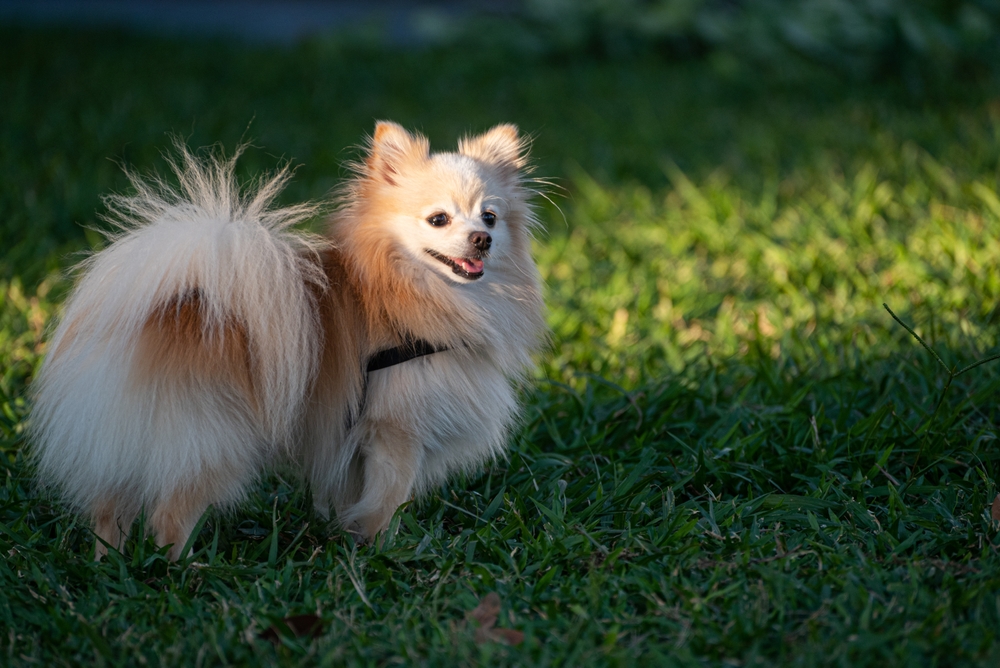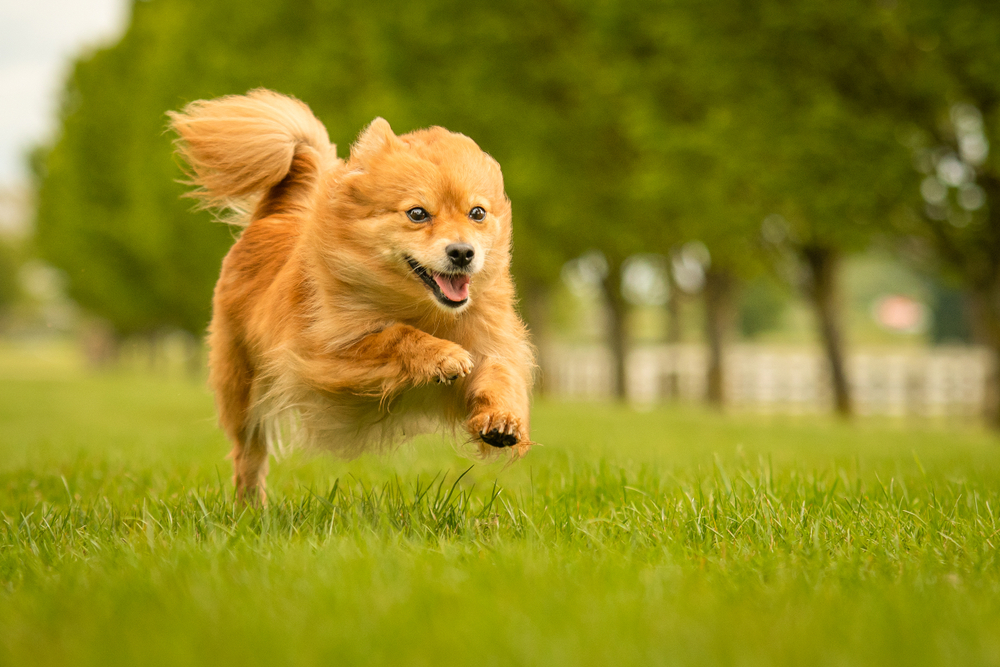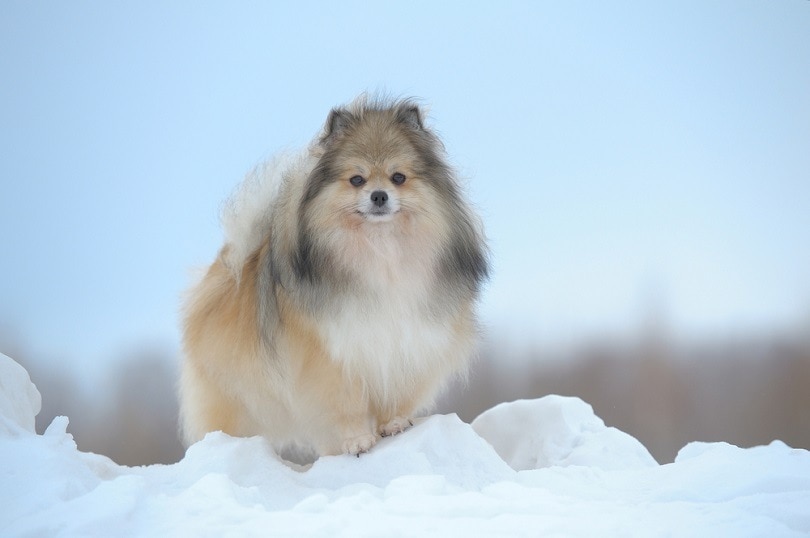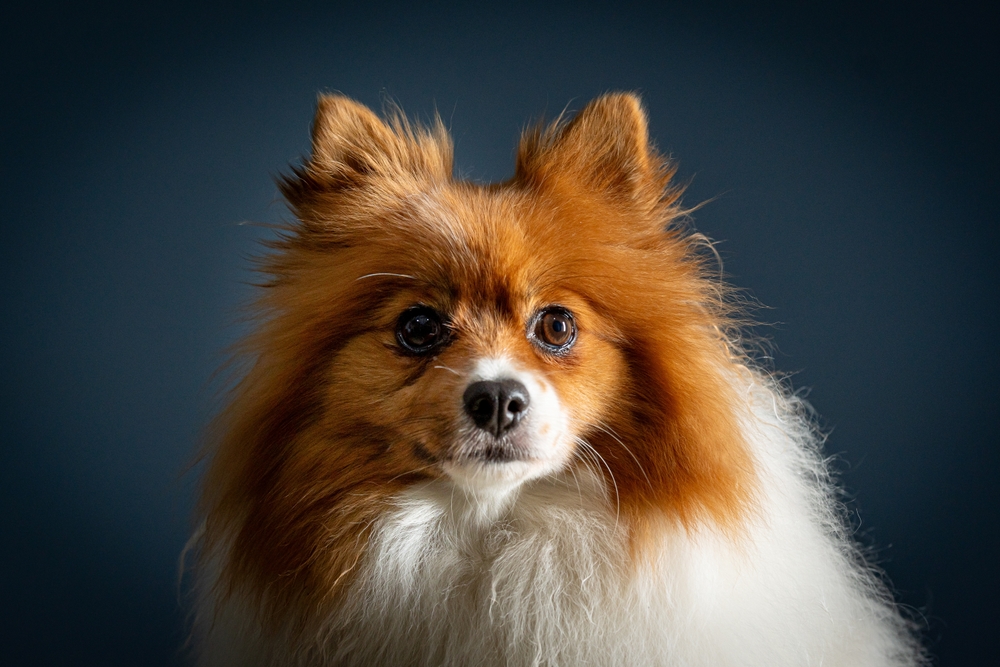Click Below to Skip Ahead
If you’re fond of the Pomeranian but wish they were a bit larger, the German Spitz is exactly what you’re looking for! If you’ve never heard of this breed, you’re not alone, so keep reading if you would like to learn more about these amazing dogs!
Breed Overview
Height:
9–15 inches
Weight:
11–23 pounds
Lifespan:
13–15 years
Colors:
Black, brown, cream, orange, white, gray-shaded
Suitable for:
Families or singles in an apartment or house
Temperament:
Lively, affectionate, loyal, intelligent, playful, attentive
The German Spitz is from Germany. Spitz breeds in general are bred for frigid temperatures, and the German Spitz is considered a northern breed. But they’re not well known and are thus quite rare outside of their native home.
These dogs are small to medium in size; in fact, are often categorized as small (klein) and medium (mittel). They also look exactly like most spitz breeds. They have thick double coats, foxy faces with upright pointed ears, and curled tails held over their backs.
German Spitz Characteristics

German Spitz Puppies

The German Spitz is relatively rare outside of Germany, so it might take a bit of digging to find a breeder, particularly in North America. You might find someone who is willing to ship a puppy to your location, but this will likely be a costly endeavor. When visiting breeders, always ask the kinds of questions that will let you know they are ethical and reputable.
We usually recommend adopting a dog in need, but you’re not likely to find a German Spitz at your local rescue organization.
German Spitz Origin & History
The German Spitz is an ancient dog breed that is thought to go back 6,000 years, and they likely lived and worked with Stone Age hunters and gatherers. But the first recorded mention of the German Spitz was around 1450, from Count Eberhard Zu Sayn of Germany. The Count praised them as brave protectors of their homes and fields.
The German Spitz gained popularity as farm dogs, watchdogs, and companions in the 1400s. While they have a long and solid history in Germany and parts of Europe, they aren’t fully recognized by the American Kennel Club, though they are part of the AKC’s Foundation Stock Service.
Temperament & Intelligence of the German Spitz 🧠
The German Spitz is an entertaining and lively dog that is devoted and independent. They are also highly intelligent and happy pups that enjoy being the center of attention. The German Spitz is quite wary of strangers and will alert you with a high-pitched bark that easily catches your attention. These characteristics make them excellent watchdogs and loving and affectionate companions.

Are These Dogs Good for Families? 🏡
The German Spitz is an excellent choice for families because they are an active and playful companion. Although they do well with children, they are relatively small in size and don’t tolerate rough play well.
As a result, they are best suited to families with older children who have learned how to treat dogs with gentleness and respect. No dog should have to endure a young child pulling on their ears or tail or otherwise mishandling them.
To strengthen the bond between your children and your furry companion, involving them in the dog’s care is highly recommended. This provides an opportunity for the kids to learn about their pet’s needs and develop a sense of responsibility.
Does This Breed Get Along With Other Pets?🐶 😽
The German Spitz is generally sociable with other dogs and can also be friendly with cats, especially if they are introduced to them at an early age. However, you’ll need to exercise caution when introducing them to smaller pets, such as birds or hamsters, as there is a risk that they may view them as prey.

Things to Know When Owning a German Spitz
Food & Diet Requirements🦴
It’s important that you provide your German Spitz with high-quality dog food that’s specifically formulated for their age and weight and is suitable for high-energy dogs.
While plenty of food options are available beyond the usual kibble, like raw or fresh food, you should always talk to your vet before making any changes to your dog’s diet. They can guide you on the type of food, the quantity, and the frequency of feeding based on your dog’s specific needs.
In addition to choosing the right food, it’s crucial to ensure that your dog has access to fresh and clean water at all times.

Exercise🐕
While the German Spitz is energetic, they only require moderate exercise, primarily because of their smaller stature. They can fulfill many of their activity needs through play, even when forced to stay indoors on bad weather days. However, it is essential to provide them with mental stimulation too, which can be achieved through playtime. You may also want to consider enrolling them in dog sports like agility or any other activity that they enjoy.
Training🦮
Training a German Spitz can prove tricky. On the one hand, they are intelligent and form strong bonds with their owners, but on the other hand, there can be stubbornness to deal with.
Effective training of a Spitz requires an owner to be patient and firm, using positive reinforcement techniques only during training sessions. Socialization is also a critical aspect of Spitz training. Introducing them to different people, environments, and animals while they are young helps them become a well-adjusted adult.

Grooming✂️
A German Spitz requires a fair amount of grooming, particularly brushing that thick double coat. It is important to note that a double-coated dog should never be shaved, as it makes them more vulnerable to extreme weather conditions. Moreover, their coat will not likely grow back in the same way.
To maintain a healthy coat, brush your German Spitz several times a week, though daily brushing is necessary during the fall and spring shedding seasons. Spitz dogs don’t require bathing that often, but when you do, be sure to use dog shampoo only.
It is also important to trim their nails every 3 to 4 weeks, check and clean their ears about once a month, and brush their teeth daily or several times a week.
Health and Conditions ❤️
The German Spitz is generally healthy, but like all breeds, they are prone to certain health conditions.
- Progressive retinal atrophy
- Retinal dysplasia
- Luxating patella
- Epilepsy
Male vs. Female
One key difference between male and female dogs is size. The German Spitz ranges from 9 to 15 inches in height and weighs 11 to 23 pounds. You can expect the females to be slightly smaller and lighter than the males.
There can also sometimes be differences in temperament between males and females. It’s widely believed that male dogs tend to be more challenging to train but more affectionate than female dogs. However, a dog’s personality is primarily shaped by how they are socialized and trained and how they have been treated.
3 Little-Known Facts About the German Spitz
1. The German Spitz Is the Oldest Breed in Central Europe
The German Spitz is believed to be a direct descendant of the Stone Age “Peat Dog,” also known as the Torfhund. As one of the oldest breeds, the German Spitz is considered to be the ancestor of many European breeds.
2. Many Believe That the Pomeranian Is the Same Breed as the German Spitz
The German Spitz breed is recognized in two sizes: small (klein) and medium (mittel). However, it’s also thought that there are three other members of the breed. The Pomeranian is believed to be a Toy Spitz, the Keeshond is categorized as a Wolfspitz, and finally, there is a Giant Spitz.

3. The German Spitz Is Also Known as the “Dunghill Barker”
This may seem like a strange nickname for the German Spitz, but it stems from one of their jobs in Germany. The German Spitz would sit in high spots and bark if anything unusual occurred. On farms, sometimes the high area was the dunghill, so they earned the German nickname, “mistbeller,” which roughly translates to dunghill barker!

Final Thoughts
The German Spitz resembles the Pomeranian so much that there are dog parents out there who adopted one of these dogs thinking that they were Poms, but they were actually German Spitz dogs! This is where those dog DNA tests can come in handy. Regardless, before deciding to bring one of these dogs into your home, do your research to ensure that they are the right breed for you.
The German Spitz is a gorgeous little dog that can prove to be an excellent companion for the right family.
Featured Image Credit: Leandro Omine, Shutterstock







